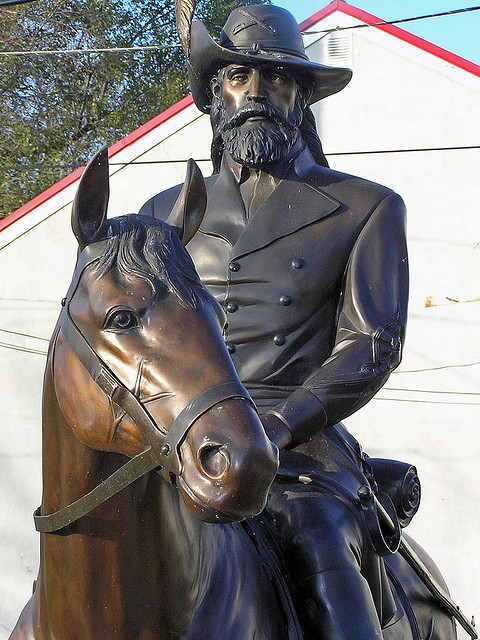By Dr. Curtis Varnell
As I travel from Dardanelle to Hot Springs, I pass a number of Civil War trail signs. I constantly ride the brakes going downhill and apply gas to the motor to climb the next incline. Travel, even in today’s modern vehicles and on paved roads is not an easy task and must have been a dauntless task for those during the war.
Roads in the mid-1800’s were scarce and those that did exist were often little more than cleared paths. Moving large numbers of men, equipment, and animals greatly limited the pathways one could traverse and, more than any other factor, contributed to where major campaigns and battles would occur. Geography and topography dictated where most campaigns and battles occurred in Arkansas, especially in the west. Looking at one campaign clearly demonstrates how travel dictated where, when, and how battles occurred.
In September of 1863, General Jo Shelby left Arkadelphia on a campaign into Missouri to enlist new recruits and to gain supplies. Traveling north with 600 men, eight wagon, and two cannon, he first had to wind his way over than through the Ouachita mountains. Six hundred men on horseback plus the wagons, would have presented an awesome sight to people in the small towns they passed. Riding four abreast, the train would have stretched more than a mile in length. Shelby, a cavalry man, would not have been pleased with the wagons and cannon. Often called “encumbrances” because they slowed him down and restricted his travels to the better roads, they were a necessity. Each of the 800 or so horses in his required 14 pound of grain and ten pounds of hay per day. On an extended campaign, he could not rely on confiscating enough feed for his animals. Grain, ammunition, and food had to be carried in the wagons.
Running east and west, some of the mountains have steep inclines and rise over 2,500 foot in elevation. Getting the horses and wagons over and through the mountains took days. Going up a slope, it was a struggle to pull the heavy wagons and the cannon. A diary from one of the eastern campaigns described the necessity of men to dismount and push a cannon to assist the animals. Getting near the top of the slope, the animals tired and stopped. Immediately, gravity took over and the wheeled cannon began rolling backward taking man and beast along for the journey. Shelby probably encountered the same problems as the traversed up the side of Nimrod Mountain. Traveling down slope was no easier. Wagon brakes were often wooden chocks, pulled on desperately to increase friction to prevent runaways.

The next geographical obstacle to moving north was the Arkansas River. Horses could swim the river but wagons, in more than two foot of water, would be caught in the current and float away. Large Union forces existed at Dardanelle and Fort Smith so Shelby choose the ford at Roseville for his crossing. After encountering troops near Roseville and fighting a small skirmish, he was able to cross the river using the ferry to transport the wagons.
Traveling through Ozark at midnight on September 27, 1863 he journeyed into the Ozark mountains, stopping for a three-day rest near present day Cass. Avoiding as many mountains as possible, he traveled up War Eagle valley into Huntsville. It is interesting that he took his troops on parade through Huntsville to allow union sympathizers to count his strength. The group in the lead doubled back and joined the end of the column and were counted several times.
His journey than took him through Mud-town near today’s Springdale and then up what is now I-49 into Missouri. Why this route? Again because the geography and terrain dictated and because there was enough water for the one-thousand horses in his group. Each horse requires ten gallons of water per day while on expedition. Ensuing battles occurred from the edge of Missouri into Sedalia. Struggling through the mud, mountains, and eventually an early winter snowstorm, Shelby and his men become known as the legendary “Iron Brigade” and return victoriously to Old Washington.
The Civil War evokes memories of cannons roaring, charges across open fields, and heroism as troops dressed in blue and grey encounter each other in battle. The Civil War road signs paint a different picture- one of slow, tedious, backbreaking travel struggling against every obstacle our environment can throw against us.







